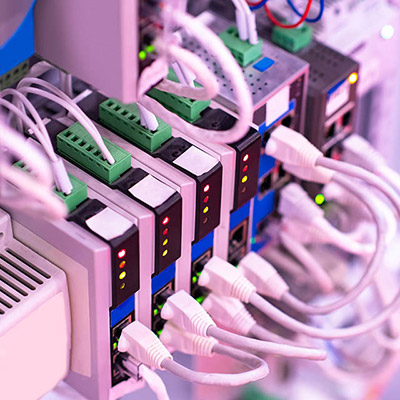The importance of transfer time to UPS
Transfer time is one of the most important factors to consider when choosing the right UPS system for your business setup. This article explains why and how to ensure that you are getting the greatest benefits from your UPS system.
Are you thinking about investing in an uninterrupted power supply for your business or personal setup? A UPS will ensure that you can protect critical components of your setup such as your data server. In the event of an issue with the mains power, the UPS will provide a replacement power source. This is designed to give you enough time to preserve your data and ensure that systems are shut down the correct way to avoid loss, corruption, or damage.
There is a wide range of variables and features to explore when you are choosing a UPS system. A critical factor to keep in mind will be the transfer time that a UPS provides.
What Is The Transfer Time?
If there is a mains failure, then a UPS will switch to the battery-derived power supply, ensuring that your systems don’t switch off. The transfer time refers to how long it takes for the UPS to complete the switch to ensure that the supply is not interrupted. It can also refer to the time it takes for the UPS to switch the power back to the mains once the issue has been resolved.
It can fall anywhere between zero and 12 milliseconds. If you want to ensure that there is no delay in transferring the power, then you need to ensure that you invest in a double conversion UPS system. This is the only type of UPS that will have zero seconds of transfer time. An offline UPS will typically take 8 milliseconds to transfer power while a line-interactive system will usually complete the switch in five.
How Short Does Your Transfer Time Need To Be?
The length of the transfer time will depend on the technology and equipment you are using the UPS to power. Specifically, you need to be aware of the hold-up time for your power supply. That way, you can guarantee that the load will not reboot or reset in the time it takes you to transfer the power.
If your load is computer equipment, then it is recommended that you do have no more than 5 milliseconds of transfer time. Due to this, you should make sure that you are investing in at least a line-interactive UPS.
If there are highly sensitive electronics that you need to keep powered on, then an online UPS with zero milliseconds of transfer time is always going to be the recommended choice.
Typically offline and line-interactive systems will be a suitable choice for most equipment. Anywhere up to eight milliseconds of transfer time should allow your systems to function uninterrupted. However, if you have sensitive equipment then an online UPS will provide the peace of mind you need.
How To Make The Best Of A UPS And Achieve ECO Mode
Business owners often have to constantly juggle the benefits of ensuring uninterrupted power to their critical systems with the cost of doing so. Ensuring that your power never faults or fails can be expensive, particularly when using a UPS. That’s why many business owners are keen to achieve ECO mode with their UPS setup.
Many UPS systems including the Eufo 800 provide ECO operation for energy-saving support. If you are keen to achieve this, then you should look for a UPS system that has that particular feature.
Essentially, this provides a system that is similar in basic operating mode to a standard offline UPS. As such, the inverter will be on standby and will only switch on if there is a power problem. If this does occur, there will then be a fractional brake in supply while the bypass switches back to the inverter. As such, you should always check what the transfer time will be when using a UPS in ECO mode. You can not afford for it to be longer than the hold-up time of your load.
Usually, ECO mode will increase the efficiency to as much as 98 or 99% depending on your system. As such, it could provide tremendous savings for your business, particularly if you are running a large-scale facility.
However, ECO mode is still only recommended where the load generates low harmonics and isn’t particularly sensitive to mains interference.
There are also options like Active ECO Mode. This is better because the inverter remains on at all times and runs with the input however doesn’t carry the load unless it needs to. As such, it provides a shorter transfer time with a similar energy saving.

